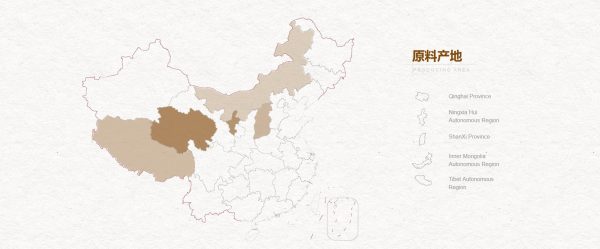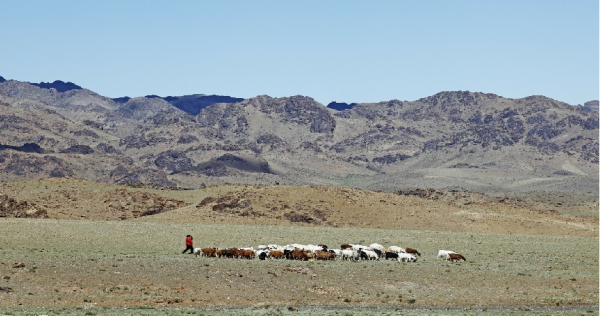In the realm of textiles, cashmere holds a distinguished position for its unmatched softness, warmth, and luxurious feel. The prestigious nature of cashmere is significantly influenced by its origins. The comprehensive cashmere market benefits from a variety of regions, each with its own unique contribution to cashmere characteristics due to their specific climates, geographies, and cultural heritage. This discussion focuses on the essential role of geographic origin in the selection of a cashmere supplier, underlining the factors that affect cashmere’s quality, as well as the sustainability and ethical considerations of its production.
Navigating through the global tapestry of cashmere production, from the expansive Mongolian steppes to the high Himalayan plains, the significance of origin in making knowledgeable choices within the cashmere sector is emphasized.
The Importance of Source Origin in Selecting a Cashmere Sweater Manufacturer

Choosing an appropriate cashmere sweater manufacturer demands a comprehensive understanding of how the source region influences both cashmere’s quality and the eco-friendly nature of its production process. China, with regions like Inner Mongolia, Ningxia, Qinghai, and Tibet, stands out for its production of high-quality and cost-efficient cashmere. However, other vital sources around the world also significantly contribute to the international cashmere market.
Inner Mongolia is renowned for its ability to produce cashmere that is both plush and resilient, a result of the harsh cold weather conditions prevalent in the region. Similarly, areas such as Ningxia, Qinghai, and Tibet are celebrated for their distinctive contributions to cashmere quality, which varies in texture and durability owing to their unique climatic and geographic characteristics.
Beyond China, nations such as Mongolia (distinct from China’s Inner Mongolia), Iran, and parts of the Himalayas within Nepal and India play pivotal roles in the cashmere sphere. Each region delivers distinctively characterized cashmere; for instance, Mongolian cashmere is lauded for its coziness and soft nature, mirroring the quality found in Inner Mongolia due to similar climatic rigors. Conversely, cashmere from Iran and the Himalayan regions stands out for its purity and naturally rich hues, catering to a luxury audience.
The choice of cashmere source also bears significant weight on sustainable and ethical practices. The focus isn’t just on the material’s quality but also on how cashmere goats are raised, the management of lands to prevent overgrazing, and the support of herders in their communities. For example, Mongolia employs rotational grazing to aid in grassland recovery, while Himalayan programs aim to safeguard the traditional ways and livelihoods of local herding communities.
To identify products adhering to high ethical and environmental standards, consumers and businesses can turn to certifications like The Good Cashmere Standard or the Sustainable Fiber Alliance. These endorsements ensure that, regardless of geographic origin, cashmere products support sustainable practices.
Understanding the source of cashmere is crucial for both consumers and businesses to appreciate the unique qualities imparted by different regions and the impacts of their production practices on sustainability and ethics. While China’s Inner Mongolia, along with Ningxia, Qinghai, and Tibet, continues to lead in the cashmere industry for its quality and affordability, recognizing and valuing the diversity and contributions of other cashmere-producing areas enhances our support and understanding of the global cashmere trade.
How Can Buyers Assess the Quality of Cashmere Products?
When selecting cashmere, a basic knowledge of its quality indicators can enrich your customization experience.
- In theory, here’s an easier way to grasp what to look for:
1.The yarn count (NM), depicted in forms like 2/26NM, 2/36NM, 2/46NM, and 2/60NM, stands as an essential metric of cashmere quality. The numeral before the slash (‘/’) represents the ply, indicating the number of threads twisted together, while the figure post-slash signifies the length in meters of the yarn weighing one gram. For instance, in a 2/26NM, ‘2’ denotes a two-ply yarn, and ’26NM’ means 26 meters of this yarn weighs one gram. A loftier NM figure points to a finer yarn, yielding a lighter, more exquisite fabric.
2. Ply significantly influences the warmth, weight, and sturdiness of cashmere garments:
A. Durability: Higher ply counts, denoting several yarns twisted together, can enhance the overall durability of the garment.
B. Warmth: Typically, garments with more plies are warmer due to the ability of multiple yarns to trap more air, offering superior insulation.
C. Weight: Ply affects the garment’s heft. Items with a higher ply are generally heavier and more robust, suited to colder climates or particular styles.
3. Softness stands as perhaps the most desired quality in cashmere, signifying that opulent feel. This attribute is determined by the fiber’s fineness, measured in microns, with the finest cashmere fibers usually less than 15 microns in diameter, creating an exceptionally smooth texture.
- Practical Tips for Physical Assessment
- Feel the Weight: Premier cashmere items should be surprisingly light yet afford ample warmth. Heaviness could suggest the presence of other materials.
- Check for Pilling: By lightly rubbing the surface, check if fibers start to form small balls. Lower quality cashmere might pill more easily due to a lesser density or being single-ply.
- Examine the Knit: Inspect the knit closely; closely-knit cashmere signifies adept craftsmanship and enduring quality.
- Stretch Test: Gently stretching a portion of the cashmere item should see it returning to its original shape, indicating good ply and density.
To learn more about cashmere, please contact us
Certifications: A Keystone for Quality and Ethical Assurances in Cashmere

Certifications hold a pivotal role in assuring buyers of both the ethical sourcing and quality of cashmere.
The Good Cashmere Standard emphasizes animal welfare, environmental protection, and the social accountability of farmers, offering buyers not only an assurance of cashmere’s quality but also of the ethical manner of its production. Conversely, the Sustainable Fiber Alliance champions eco-friendly practices, animal welfare, and the socio-economic development of herding communities, acting as a testament to sustainable practices in the cashmere supply chain and assuring responsible sourcing.
Inspecting tags for these certifications adds an extra layer of confidence in the quality and sustainability of the cashmere products, ensuring that buyers can delight in the luxuriousness of cashmere with peace of mind regarding its quality and ethically grounded production standards.
Conclusie
Selecting an apt cashmere sweater manufacturer transcends mere fiscal considerations, deeply intertwining with aspects of ethics, quality, and sustainability. This detailed analysis shows how the geographic origin of cashmere significantly shapes its qualities and the surrounding production practices. With a focus on ethical standards and sustainability, certifications like The Good Cashmere Standard and Sustainable Fiber Alliance provide essential assurances, steering consumers and businesses toward responsible choices. Hence, choosing a cashmere supplier becomes an informed process, one that incorporates the multitude of regions, a pursuit for excellence, and a pledge to ethical, sustainable practices. Balancing cost with these vital considerations isn’t just about preserving a brand’s reputation or ensuring product superiority; it’s about enriching the global narrative of cashmere, ensuring it remains a symbol of luxury that cherishes the environment and the many artisans it involves.

 English
English Deutsch
Deutsch Français
Français Italiano
Italiano Español
Español Русский
Русский Polski
Polski Nederlands
Nederlands Svenska
Svenska

